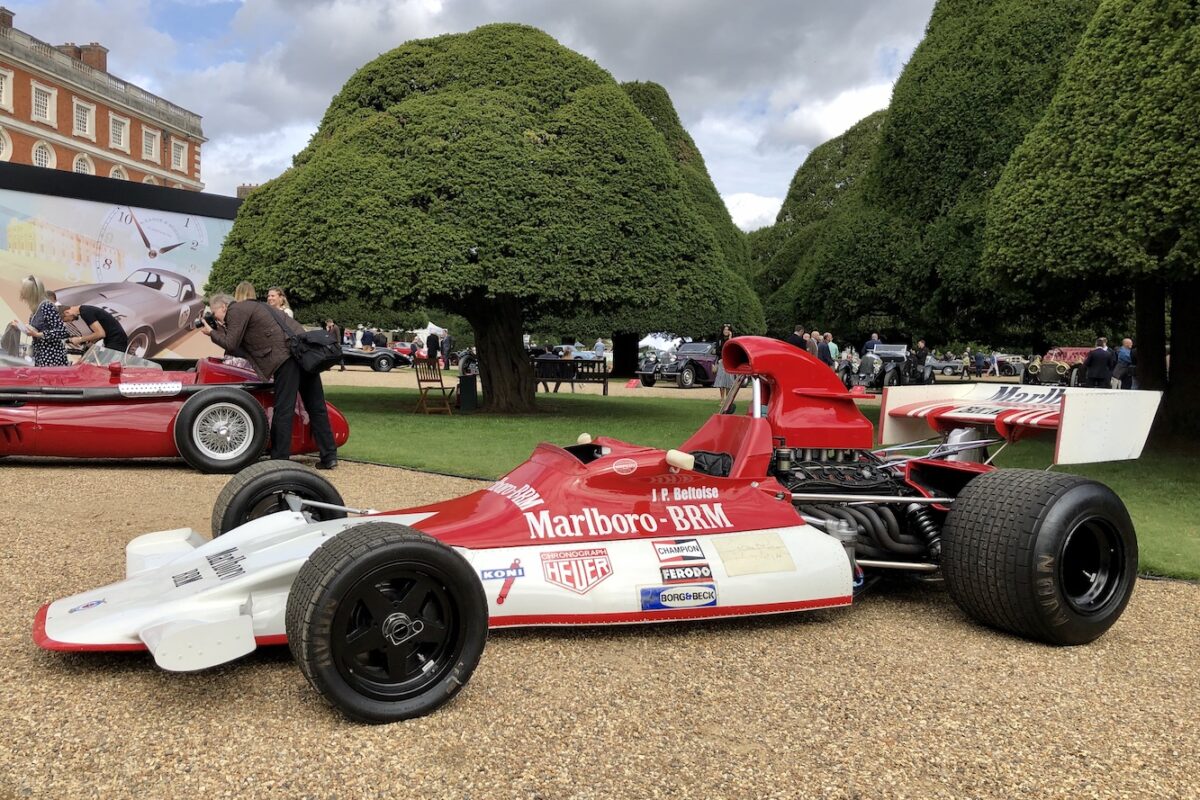The Remarkable History of the 1972 BRM P180

Aa Britain’s answer to Ferrari, between 1950 and 1977 BRM started 197 Grand Prixes – taking 17 victories, 11 pole positions, 15 fastest laps, one Drivers’ World Championship and one Formula 1 Constructors’ World Championship in the process. Powered by the tried-and-tested BRM 3.0-litre V12, the P180 was designed by Tony Southgate and raced in the 1972 season. Only two P180s were ever completed – P180-01 and this car, P180-02. The latter was the more successful of the two, and was even driven by Niki Lauda in an early test for him. These were the first F1 cars to carry Marlboro livery as well.
The P180 was a completely new design. It had a flat-bottomed, wedge-shaped monocoque. Twin radiators were mounted at the rear to help with the aerodynamic design of the nose and tail section, while at the other end the car had all-enveloping bodywork, apart from various air scoops required for the water and oil radiators along with inboard brakes.The cockpit surround had a removable panel that enclosed the driver to the extent that the top of the steering wheel appeared through a slot in the cowling.
BRM’s P180 made its debut at the 1972 Spanish Grand Prix with Peter Gethin, but retired when the engine failed. Howden Ganley drove the car at Monaco and again retired after an accident. The model didn’t appear again until the Italian Grand Prix, when Jean-Pierre Beltoise drove it to eighth place. He was joined by Bill Brack for Canada, yet Brack bailed out when he spun off, while Beltoise also retired when he had an oil leak. For the US Grand Prix Brian Redman replaced Brack, but he went out when his engine failed. Beltoise also retired when his ignition gave up.
The P180’s long-awaited moment of glory finally came with this car, photoed at Concours of Elegance 2020, when Jean-Pierre Beltoise won the John Player Victory meeting at Brands Hatch by a little over five seconds. For 1973 BRM gave up on the model and concentrated on an improved version of the P160, but the P180 would influence future designs, particularly in highlighting the necessity for designers to have airflow in mind from the nose all the way to the tail of the car.
In 2001 P180-02 returned to the track, and it has since proven a pole-sitter and front-runner at many historic races. In 2014 it was invited to the Austrian GP to take part in an on-track demonstration, where it was driven by Sebastian Vettel.
ENGINE
3.0-litre V12, double overhead camshaft, 440bhp, fuel injection
CONFIGURATION
Mid-mounted, five-speed manual gearbox, rear-wheel drive, aluminium monocoque, double-wishbone coil-spring suspension, disc brakes all round
Read more on

Have you checked us out on Instagram.
Check us out here.Related Stories
Advertisement Advertisement
Advertisement Advertisement
Advertisement

